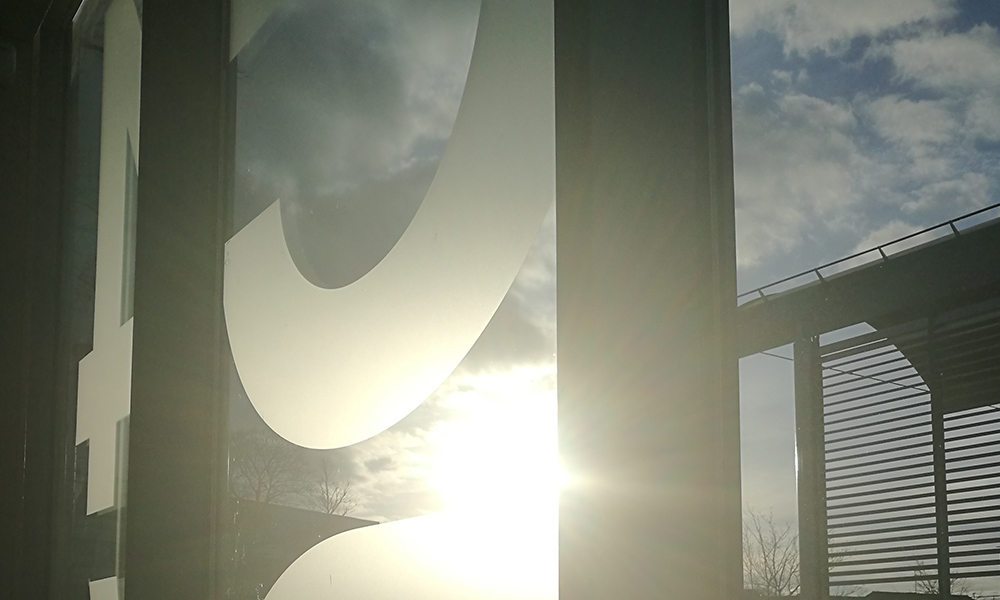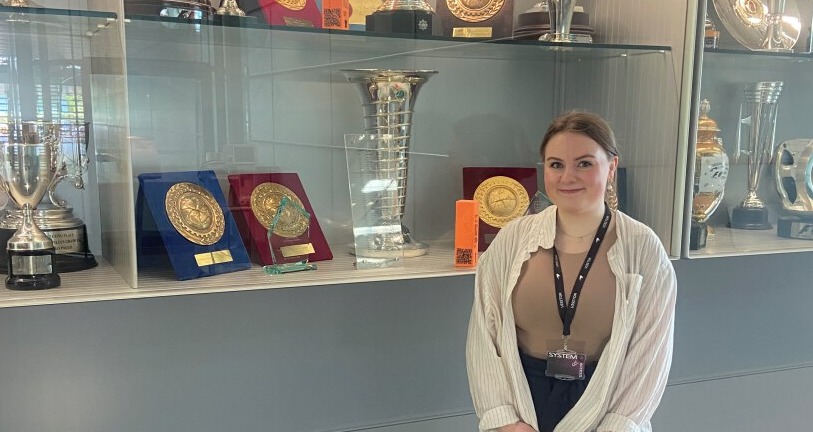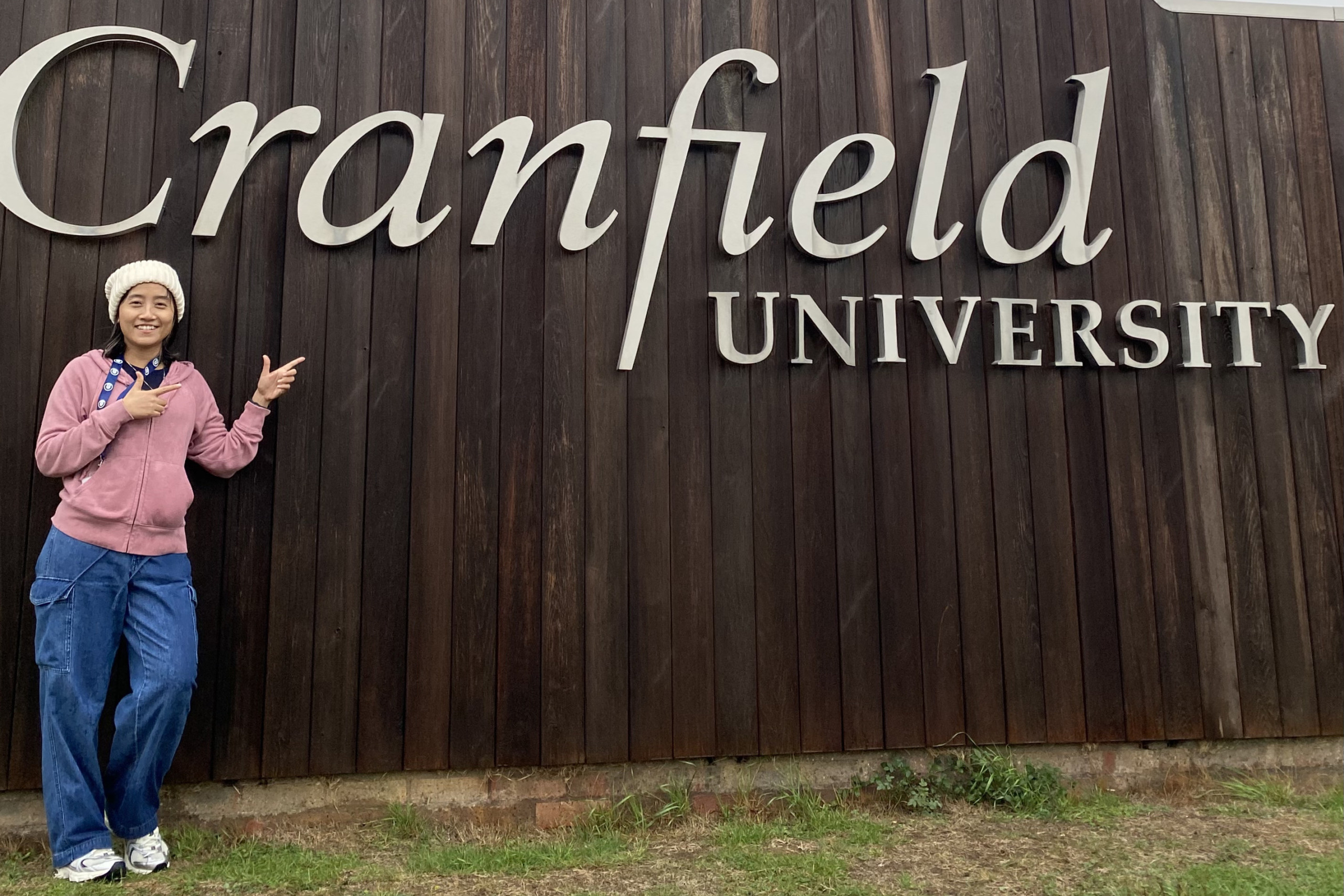Life as a Cranfield University C4D student
21/11/2017

“Are you going to be an artist?” This is what my family and colleagues asked me when I told them I was going to study design.
After nearly five years of marketing, communications and consumer service management work experience, at P&G China, I decided to return to studies and applied for the Innovation and Creativity in Industry MDes at Cranfield. When I first arrived I was unsure as to how the year would go, what it would lead me to, and whether my time and money would pay off. After a year here, the Centre for Competitive Creative Design (C4D) has completely changed my view of design, and my career path is clearer than ever before.
A small but diverse community
With a broad span, the essence of design is the discovery of human behaviors, and creative problem solving. People from every background can find their own niche in this area. I was surprised that in our small community (15 students, unimaginable in a Chinese class!) every classmate had their own unique background, for example, civil engineering, mechanical engineering, industrial design, food and nutrition, project management, user experience design and business. Interestingly, most of us did not have any previous expertise in art (which proved not to be a problem).
Living in this diverse community was really fun! As a real foodie I was very happy to be surrounded by international food: French pastry and chocolate cake, Mexican nachos and burritos, Indian dal and roti, and English scones and cottage pie.
Before long, everyone on campus became friends. I will never forget the time spent drinking coffee together, eating feasts of duck fried rice at Uncle Lim’s restaurant, and our parties, drinking and dancing in the CSA – the centre of Cranfield life of an evening.
Intense study, maximised value
I knew it was going to be an intense year when I was given the study schedule. Between September and February, we had eight taught modules, each module for five days from 9 am till 6 pm. Lunch? Just 30 minutes to grab a sandwich, and you might need to have group discussions for the afternoon class at the same time. Weekends? No, I am afraid you need to do course essays which need to be submitted the following week. Hard work without doubt, but we were learning so much and enjoying our time so it flew by!
The taught courses covered a broad span of topics, for example design thinking, whole system design, entrepreneurship, new product development, and consumer research. Every module included a unique combination of theory and practice. One of the most amazing aspects of C4D is its wide and close collaboration with industry. During each module, two or more industry practitioners shared their experiences and opinions from an industry perspective. Our module assignments and projects were always about solving real business challenges, for example new concepts for green tyres, the redesign of disposable plastic bags, or a new equity framework for luxury vehicles. These challenges enabled us to acquire new knowledge and skills in real business contexts, to make wide industry connections, and to gain industry project experience which could be put on our CV as well.
Although studying was intense, everyone came out excited and fulfilled. My classmate once joked: “When you see your friends in other universities traveling around the world on vacations, there is no need to be jealous. Think about how the big names – Bill & Melinda Gates Foundation, Jaguar Land Rover, and the Ellen McArthur Foundation – will win you more attention from future employers.” This is undoubtedly true!
A winning student lecturer ratio enhanced my academic training
Another amazing part of C4D is that everyone here received all the academic support they needed from their lecturers (outside of regular ‘class time’, I’ve enjoyed many in-depth discussions with my supervisor, which has helped sharpen my understanding). We have dedicated supervisors for each course, module, and project, and they are all very helpful and patient in giving guidance and answering questions. In this open and free research environment, there exists a mutual trust between students and lecturers, which enables creativity and grounded research.
We were trained to be rigorous researchers from day one. Apart from group activities and presentations, all our module essays were required to be written in journal style. This was difficult for me at the beginning as the requirements for academic writing here are different from those in China. For example, I didn’t know how to plan new research, use academic references and write in a clear and concise manner. Even more challenging was that I of course needed to write it all in English! Luckily, training in academic research methods and writing took place throughout the year, in lectures, workshops, practice, essay feedback, and in every supervisor meeting.
I have benefited from this academic training and learnt to look at questions from a new perspective. Making smart suggestions is common in the workplace, but as an academic, you also need to support your suggestion and prove it through a rigorous process (you will be astonished how many widely believed common sense theories will be proven wrong!) This process of asking questions, discovering truth, and defining solutions is fascinating!
Time flies. The memories of laughing and debating with colleagues, having meetings with supervisors and industry partners, standing in front of my poster and showing my project are all still fresh in my mind. Looking back, it was a year of self-development, joy and fulfillment. And no, I haven’t become an artist. I am now preparing to embrace my next challenge, studying a PhD, which I would never have imagined before my life at Cranfield and C4D.
Thank you Cranfield, thank you C4D!
—
Categories & Tags:
Leave a comment on this post:
You might also like…
Automotive Engineering: From student to hypercar innovation at Rimac
We sat down with recent graduate Thomas Perrin, to discuss how his year on the MSc in Automotive Engineering at Cranfield University propelled him from the lecture hall directly into the ...
What this year at Cranfield really meant to me
Every Cranfield journey is unique. In this alumni reflection, Zachea Scicluna shares what her year at Cranfield truly meant, from facing uncertainty to gaining hands-on experience in industry-backed projects. I’ve been reflecting (and delaying) ...
Preparing for assignments and exams?
Sorry! We know it seems a bit mean to mention the exams in January rather than looking forward to the break before it! However, we know many of you will be thinking about your forthcoming ...
Screening for FTSE 100 companies on Bloomberg
So you’re researching an index and need some data on its constituent companies? Bloomberg’s Equity Screening tool makes light work of this, not just for the FTSE, but for indices, exchanges and sectors worldwide. Type EQS ...
Accelerating my future: How Cranfield put me on the fast track to automotive safety innovation
Hello! I’m Michaela Kaiser, and I’m thrilled to share my journey studying abroad. I’m from Calgary, Canada, and I recently graduated from Cranfield’s MSc Automotive Engineering course. My path to Cranfield ...
From Myanmar to Cranfield: My path to Renewable Energy
As someone who is passionate about sustainability, my career goal is to build a path in the renewable energy sector. My aspirations comes from the benefits of developing sustainable energy sources and ensuring energy ...






